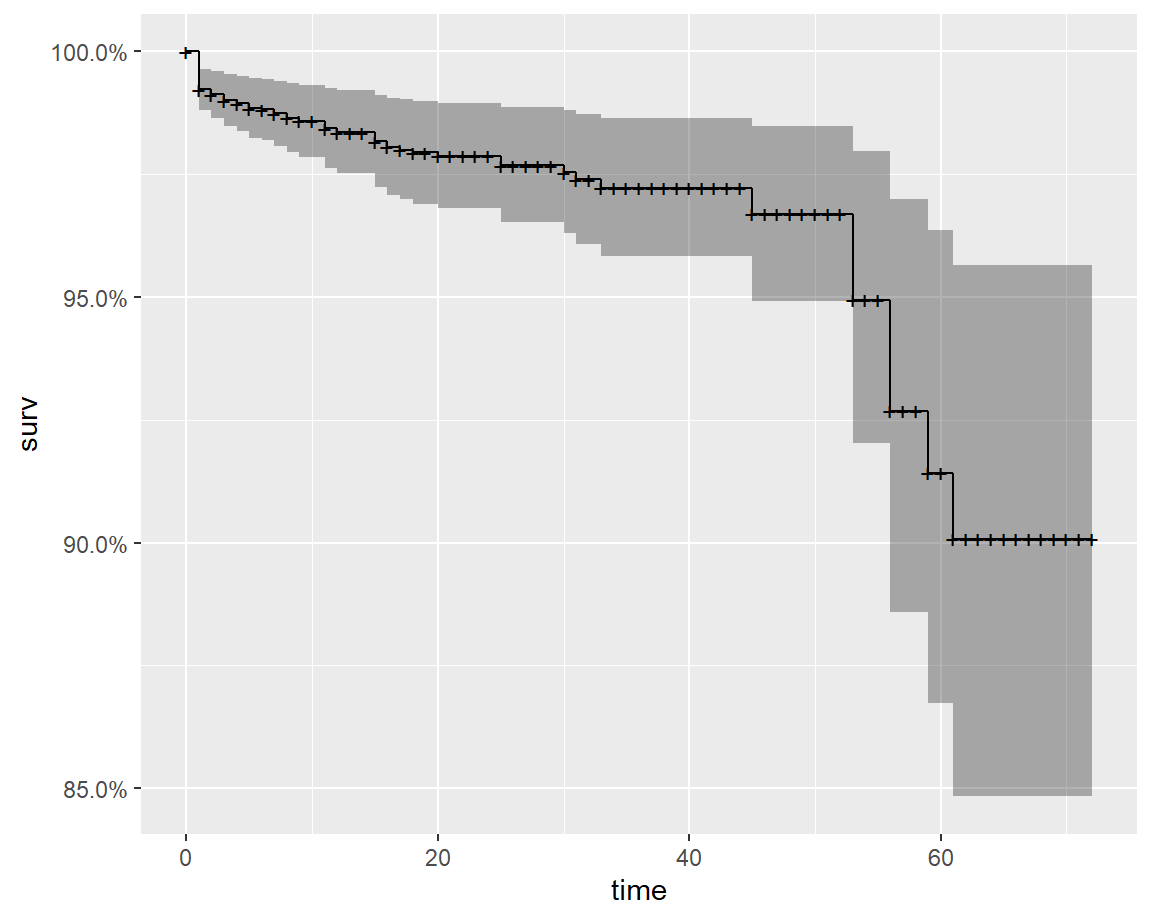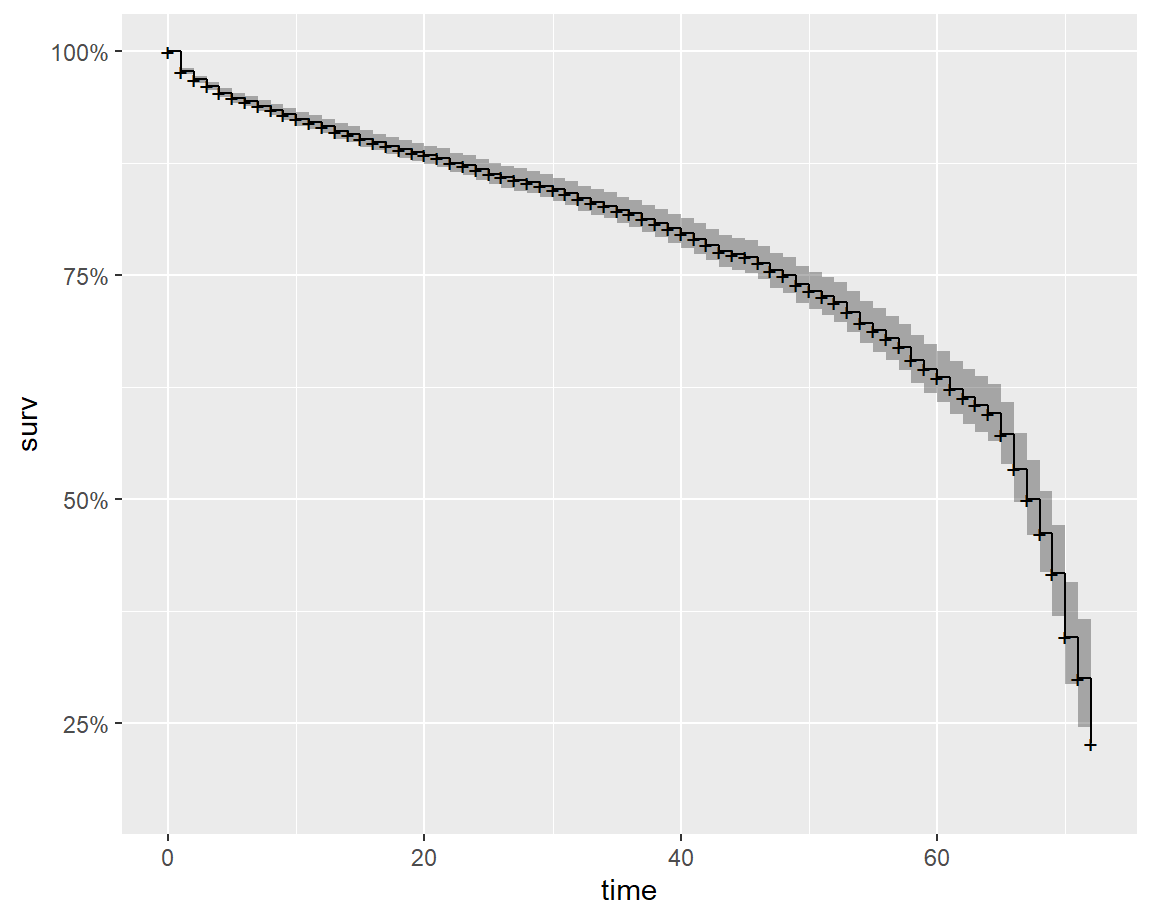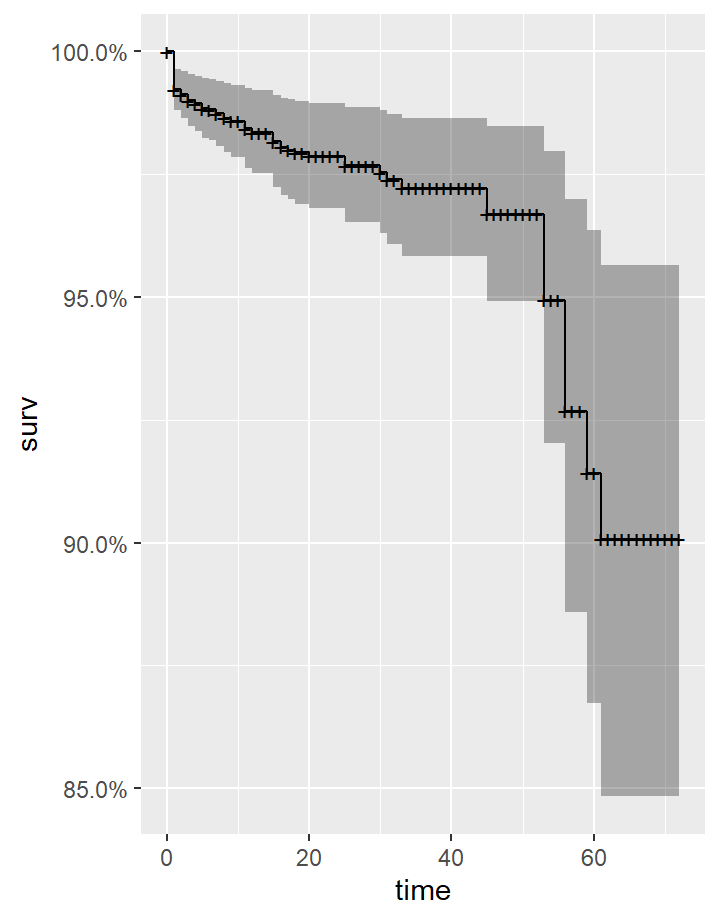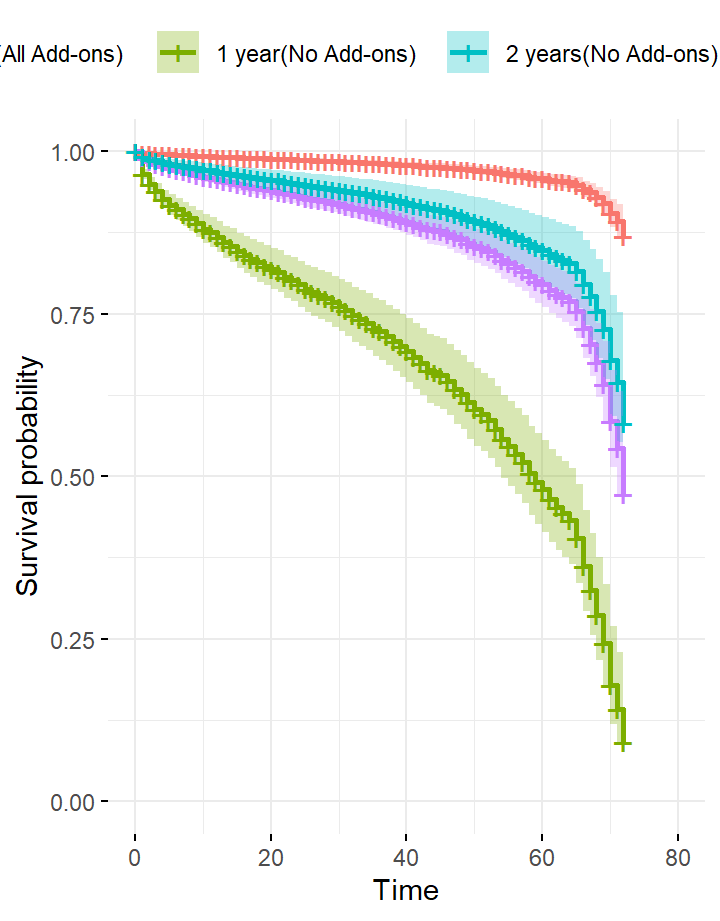The problem
Assume we want to reduce the churn rate of customers of an existing product/service. In this regard, we have access to CRM (customer relationship management) data for analysis.
We can perform a survival analysis on the CRM data to predict when customers are likely to churn. Additionally, this also helps us zero-in on which product/service features are most useful in improving customer retention.
Survival analysis, which is a mainstay of the medical domain, has wide applicability not just within marketing, but also in HR, where it’s used to model employee attrition. It’s ideal for situations, when standard methods like regression cannot be used due to censoring (where following up with a subject is not always possible in a study, or a subject withdraws from the study on their own).
Some of the models used in survival analysis are Kaplan-Meier estimation, Weibull (& other parametric models), & the Cox proportional hazard model. The latter is the most popular, & is also used here.
A typical exercise when modeling customer churn is to compute survival curves for different covariates, that correspond to different product lines. This gives an insight into which product features most impact churn, & also help guide our focus during customer retention execution.
Note that Cox-ph assumes static covariates that don’t vary with time. Sometimes, this assumption may not hold, in which case we would have to employ additional strategies, such as constructing survival curves for individual time segments etc (which is not demonstrated here).
Who are our customers in general?
We’ve data from 7043 customers. For illustrative purposes here’s a random sample of 100 of them, as the full table would be too big, & causes client-side display issues.
Each row represents a customer, each column contains customer’s attributes. The data set includes information about:
- Customers who left within the last month – Churn column at the end
- Services that each customer has signed up for – phone, multiple lines, internet, online security, online backup, device protection, tech support, and streaming TV and movies
- Customer account information – how long they’ve been a customer, contract, payment method, paperless billing, monthly charges, and total charges
- Demographic info about customers – gender, age range, and if they have partners and dependents
For more meaningful analysis, we segment this data into those:
- customers with plain, vanilla phone service; &
- customers who have opted for internet service.
This segmentation is necessary as the churn behavior of these segments is likely different, due to their differing service offerings.
Who are our vanilla, phone service customers?
We’ve a subset of 1526 customers who are enrolled in our basic phone service, sans internet. For illustrative purposes here’s a random sample of 100 of them, as the full table would be too big to display.
These vanilla service customers choose among a limited bouquet of options such as:
- contract length (month-to-month, one year, two year);
- option for multiple lines;
- paperless billing; &
- method of payment (Automatic bank transfer, Automatic Credit card debit, Electronic check, Mailed check).
Who are our internet service customers?
We have a subset of 5517 customers who have enabled internet along with the regular phone service. For illustrative purposes here’s a random sample of 100 of them, as the full table would be too big to display.
In addition to the options offered to vanilla phone service customers, like contract period etc., they can also choose from an expanded set of options such as:
- Type of internet service (DSL/Fiber);
- Online security service;
- Online backup service;
- Router device protection;
- Online tech support;
- Streaming TV; &
- Streaming movies.
What are the main variables that influence churn in vanilla customers?
We see that in the case of vanilla phone service customers, only the contract length is of the greatest significance on customer churn. This has been highlighted in the table.
To retain these customers, we should focus more of our efforts on enrolling them into longer term (one year, two year) contracts, as opposed to marketing various payment methods, paperless billing, & ability to host multiple lines.
What are the main variables that influence churn in internet enabled customers?
Signing up customers for longer contract periods seems to be the most important lever to reduce churn. This is followed in decreasing order of effectiveness by add-ons such as online security, & online backup. Even less effective are giving customers the option of having multiple lines, tech support, & device protection. Though additional parameters have been highlighted to be significant, they’ve been ignored, as their estimated values were deemed to be too low to be effective, based on business discussions.
Interestingly, manual methods of payment via electronic check or mailed check increase churn relative to automated methods of payment such as bank transfer & credit card transfer. This is probably because manual payment heightens loss aversion as it makes price salient in the customers mind. Thus, it would be worthwhile to promote automated means of payment as means to reduce churn.
Additionally, although paperless billing is also associated with increased churn, a business decision was made to continue along with it, due to cost savings for the company.
How do our vanilla customers churn over time?

How do our internet enabled customers churn over time?

How is churn impacted by contract length for the vanilla customers?

Here, we see how crucial contract length is to reduce churn in the vanilla segment. Even moving customers to just a one year plan from a month-to-month contract, would still lead to a significant reduction.
How is churn impacted by contract length for internet enabled customers?

Once again, similar to the vanilla segment, we see that contract duration has a significant impact on churn in the internet service segment, with customers on longer term contracts, churning less often.
To better focus only on the contract duration parameter, we’ve omitted any bells & whistles/add-ons that may impact the churn rate.
Do bells & whistles (add-ons) have an impact?

Reducing churn by pushing lengthier contracts is easier said than done, as enrolling customers long term contracts is always a tough sell. While we have little choice in the case of our vanilla phone service, here we can focus on parameters other than contract periods, that elicit lesser customer resistance.
Introducing customers to the bells & whistles (add-ons) of our internet service significantly reduces their churn. These add-ons are drawn from our earlier analysis, & include:
- Online security packs;
- Online backup option;
- Allowing customer to host multiple lines;
- Tech support privileges; &
- Router device protection.
Here, we see the impact of these add-ons from the survival curves of the following 4 contracts:
- A Monthly contract with all the add-ons; VS
- A plain One year contract without the add-ons.
And:
- A One year contract with all of the add-ons; VS
- A plain Two year contract.
In each case we see that with add-ons, a shorter duration contract has a higher survival probability (& thus a lower churn rate) than a longer duration contract!
Surprisingly, a monthly customer enrolled with add-ons is comparable to a customer on a plain 2 year contract, as evidenced by how close their associated curves are in the plot!
Thus, we’ve a richer set of options, than just contract length, when formulating our customer retention strategy for the internet service segment.




